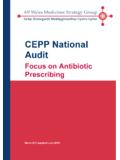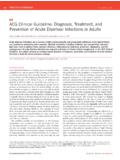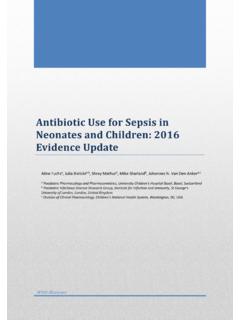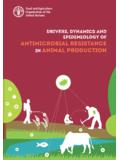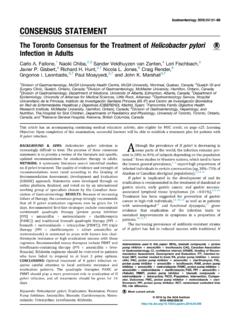Transcription of Medicines Adverse Reactions Committee - Medsafe
1 Safety of antibiotic ear drops in children with grommets CONFIDENTIAL Medicines Adverse Reactions Committee : 8 June 2017 Page 1 of 19 Medicines Adverse Reactions Committee Meeting date 8 June 2017 Agenda item Title Safety of antibiotic Ear Drops in children with Grommets Submitted by Medsafe Pharmacovigilance Team Paper type For advice Active constituent(s) Medicines Sponsors Clioquinol; Flumetasone pivalate Locorten-Vioform Locacorten-Viaform AFT Pharmaceuticals Ciprofloxacin; Hydrocortisone Ciproxin HC Otic Ear drops Pharmaco (NZ) Ltd Framycetin; Gramicidin; Dexamethasone Sofradex Sanofi-aventis New Zealand limited Framycetin Soframycin Sanofi-aventis New Zealand limited Neomycin; Gramicidin; Nystatin; Triamcinolone Kenacomb Ear drops Pharmacy Retailing (NZ) Ltd t/a Healthcare Logistics Funding Locorten-Vioform/Locacorten-Viaform; Kenacomb; Sofradex*; Soframycin*. *Part funded only Previous MARC meetings None International action None Prescriber Update None Schedule Prescription Advice sought The Committee is asked to advise whether.
2 There is evidence of a difference in the risk of ototoxicity between the antibiotic containing ear drops when used in children with grommets or in patients with a perforated tympanic membrane the sponsor for Ciproxin HC (quinolone) ear drops should be given the opportunity to remove the contraindication for use in patients with a perforated tympanic membrane and replace it with a warning statement the sponsor for Locorten-Vioform/Locacorten-Viaform (hydroxyquinolone) include information on the risk of ototoxicity the sponsors for Sofradex, Soframycin and Kenacomb (aminoglycosides) should add a warning statement indicating that the risk of ototoxicity is increased with increasing duration of use and continuation of treatment after resolution of symptoms this safety concern requires further communication other than MARC s Remarks in Prescriber Update. Safety of antibiotic ear drops in children with grommets CONFIDENTIAL Medicines Adverse Reactions Committee : 8 June 2017 Page 2 of 19 Table of Contents PURPOSE.
3 3 BACKGROUND .. 3 antibiotic Containing Ear Drops .. 3 Otorrhoea .. 6 Acute tympanostomy tube otorrhoea .. 6 Otitis 6 Chronic Suppurative Otitis Media (CSOM).. 6 Comparison with International Data Sheets .. 7 CLINICAL GUIDELINES .. 9 New Zealand .. 9 BPAC .. 9 New Zealand Formulary and New Zealand Formulary for Children .. 9 New Zealand Society of Otolaryngology Head and Neck Surgery (NZSOHNS)(8) .. 10 Kids Health .. 10 International Guidelines .. 11 Australia .. 11 UK .. 11 Canada .. 11 USA .. 11 Other Guidelines .. 11 UpToDate 2016 .. 12 SCIENTIFIC INFORMATION .. 12 Systematic Reviews .. 12 Venekemp et al. 2016 (6) .. 12 Harris et al. 2016 (14).. 14 Chee et al. 2016 (3) .. 14 Matz et al. 2004 (15) .. 14 Clinical Information .. 15 Mahadevan et al. 2008 (16) .. 15 CARM Data .. 15 Usage Data .. 16 DISCUSSION AND CONCLUSIONS .. 16 ADVICE 17 ANNEXES .. 18 REFERENCES .. 19 Safety of antibiotic ear drops in children with grommets CONFIDENTIAL Medicines Adverse Reactions Committee : 8 June 2017 Page 3 of 19 PURPOSE The purpose of this report is to review the safety of using antibiotic containing ear drops in children with grommets.
4 BACKGROUND In November 2015, CARM informed Medsafe of a case report of Locorten-Vioform use in a child with grommets. As the Locorten-Vioform data sheet contraindicates use in patients with a perforated ear drum, an assessment of the safety of using ear drops in children with grommets was considered necessary. CARM indicated that Lareb had presented a series of similar cases at the National Pharmacovigilance Centres Meeting in October 2015. Lareb presented 34 reports of possible ototoxicity (dizziness, impaired hearing) in association with ear drops containing colistimethate, bacitracin and hydrocortisone, which are indicated for use in otitis externa in the Netherlands. Fifteen reports indicated that they had been used in people with non-intact tympanic membranes. Lareb expressed concern that these ear drops were being used despite the contraindication in the data sheets. However, they acknowledged that the ear drops may have been used off-label to treat chronic suppurative otitis media (CSOM), which could confound the reports as CSOM is a known cause of ototoxicity.
5 Medsafe comment There are no ear drops containing colistimethate or bacitracin with consent for distribution in New Zealand. As no details of individual cases are provided in the Lareb abstract, it is unclear how many (if any) patients had grommets, how long they were treated for, whether symptoms improved when treatment was stopped and whether long term follow-up has occurred. Colistimethate is a polymyxin antibiotic which is a class of antibiotics which has been associated with ototoxicity in published case reports (See below). NZ guidelines advise against the use of polymyxin containing ear drops except upon the advice of an ear nose and throat ENT specialist (1). antibiotic Containing Ear Drops There is a range of antibiotic and combination antibiotic /corticosteroid containing ear drops available for use in New Zealand (Table 1). Most of the approved products contain an aminoglycoside antibiotic (such as framycetin, gramicidin and neomycin).
6 Locorten-Vioform contains clioquinol, which is a hydroxyquinolone compound that has broad-spectrum antimicrobial activity against fungi and gram-positive bacteria and has a moderate inhibitory effect on gram-negative bacteria (2). Currently, there is only one available product containing a quinolone antibiotic (Ciproxin). However, there is another consented product that contains a quinolone antibiotic (Cilodex) that is currently not available. PHARMAC does not currently fund any ear drops containing quinolone antibiotics (Table 1). All products are indicated for the treatment of otitis externa (Table 1). All data sheets, including those containing quinolone antibiotics, contraindicate use in the presence of a perforated tympanic membrane. None of the available data sheets of ear drops containing antibiotics include information regarding use in children with grommets. Safety of antibiotic ear drops in children with grommets CONFIDENTIAL Medicines Adverse Reactions Committee : 8 June 2017 Page 4 of 19 Table 1: Ear drops approved for use in New Zealand Brand name and ingredient Indications Use with perforated tympanic membrane and/or grommets Warning statements Locacorten-Viaform and Locorten-Vioform (Annex 1) (Clioquinol, Flumetasone pivalate) Hydroxyquinolone antibiotic FUNDED BY PHARMAC Eczema of the external auditory meatus in which secondary infection with micro- organisms sensitive to clioquinol has occurred.
7 Otitis externa Otomycosis Contraindications Perforation of the ear-drum (suspected or verified) No reference to use in grommets. Contraindications Use in children under 2 years of age. Special warnings and special precautions for use Prior to the beginning of therapy, the ear-drum should be checked by the physician. If there is a risk that perforation of the ear-drum may occur or is perforated, LOCACORTEN-VIAFORM ear drops should not be used Ciproxin HC Otic Ear drops (Annex 2) (Ciprofloxacin , Hydrocortisone 1%) Quinolone antibiotic The treatment of acute bacterial external otitis caused by organisms susceptible to the action of ciprofloxacin, including Pseudomonas aeruginosa, Staphylococcus aureus, Acinetobacter anitratus (baumannii), Stenotrophomonas maltophilia, Enterobacteriaceae, Enterococcus faecalis and Proteus mirabilis. Contraindications The safety and efficacy of Ciproxin HC Ear Drops have not been studied in the presence of a perforated tympanic membrane. Ciproxin HC Ear Drops are, therefore, contraindicated in patients with known or suspected perforation, or where there is a risk of perforation of the tympanic membrane.
8 No reference to grommets. None Sofradex (Annex 3) (Framycetin, Gramicidin, Dexamethasone) Aminoglycoside antibiotic FUNDED BY PHARMAC In the ear: Otitis externa. Contraindications Otitis externa should not be treated when the eardrum is perforated because of the risk of ototoxicity. No reference to grommets. Warnings and Precautions Aminoglycoside antibiotics may cause irreversible, partial or total deafness when given systemically or when applied topically to open wounds or damaged skin. This effect is dose related and is enhanced by renal or hepatic impairment. Although this effect has not been reported following topical ocular use, the possibility should be considered when high dose topical treatment is given to small children or infants. Soframycin (Annex 4) (Framycetin) Otitis externa. Contraindications Perforation of the tympanic membrane Warnings and Precautions Safety of antibiotic ear drops in children with grommets CONFIDENTIAL Medicines Adverse Reactions Committee : 8 June 2017 Page 5 of 19 Aminoglycoside antibiotic FUNDED BY PHARMAC No reference to grommets.
9 Aminoglycoside antibiotics may cause irreversible, partial or total deafness when given systemically or when applied topically to open wounds or damaged skin. This effect is dose related and is enhanced by renal or hepatic impairment. Although this effect has not been reported following topical ocular use, the possibility should be considered when high dose topical treatment is given to small children or infants. Kenacomb (Annex 5) (Gramicidin, Neomycin, Nystatin, Triamcinolone acetonide) Aminoglycoside antibiotic FUNDED BY PHARMAC The topical treatment of superficial bacterial infections, cutaneous candidosis and dermatological conditions known to respond to topical steroid therapy when threatened or complicated by bacterial or candidal superinfections, especially otitis externa. Contraindications Should not be applied to the external auditory canal in patients with perforated eardrums. No reference to grommets. Special warnings and precautions for use Care is necessary in applying this preparation if perforation of the eardrum is suspected.
10 Because of the potential hazard of nephrotoxicity and ototoxicity, this medication should not be used in patients with extensive skin damage or other conditions where absorption of neomycin is possible. Cilodex Ear Drops (Ciprofloxacin , Dexamethasone 1%) Quinolone antibiotic Cilodex is indicated for the topical treatment of acute otitis media in patients with tympanostomy tubes and acute otitis externa in patients caused by strains of bacteria susceptible to ciprofloxacin. No data sheet as not currently available No data sheet as not currently available Safety of antibiotic ear drops in children with grommets CONFIDENTIAL Medicines Adverse Reactions Committee : 8 June 2017 Page 6 of 19 Otorrhoea Acute tympanostomy tube otorrhoea Grommets (also known as tympanostomy or ventilation tubes) are used to restore hearing in children with chronic otitis media (inflammation of the middle ear) with effusion (OME) and can also be used to prevent recurrent OME. Insertion of grommets is one of the most common day ENT surgeries performed in children (3, 4).











